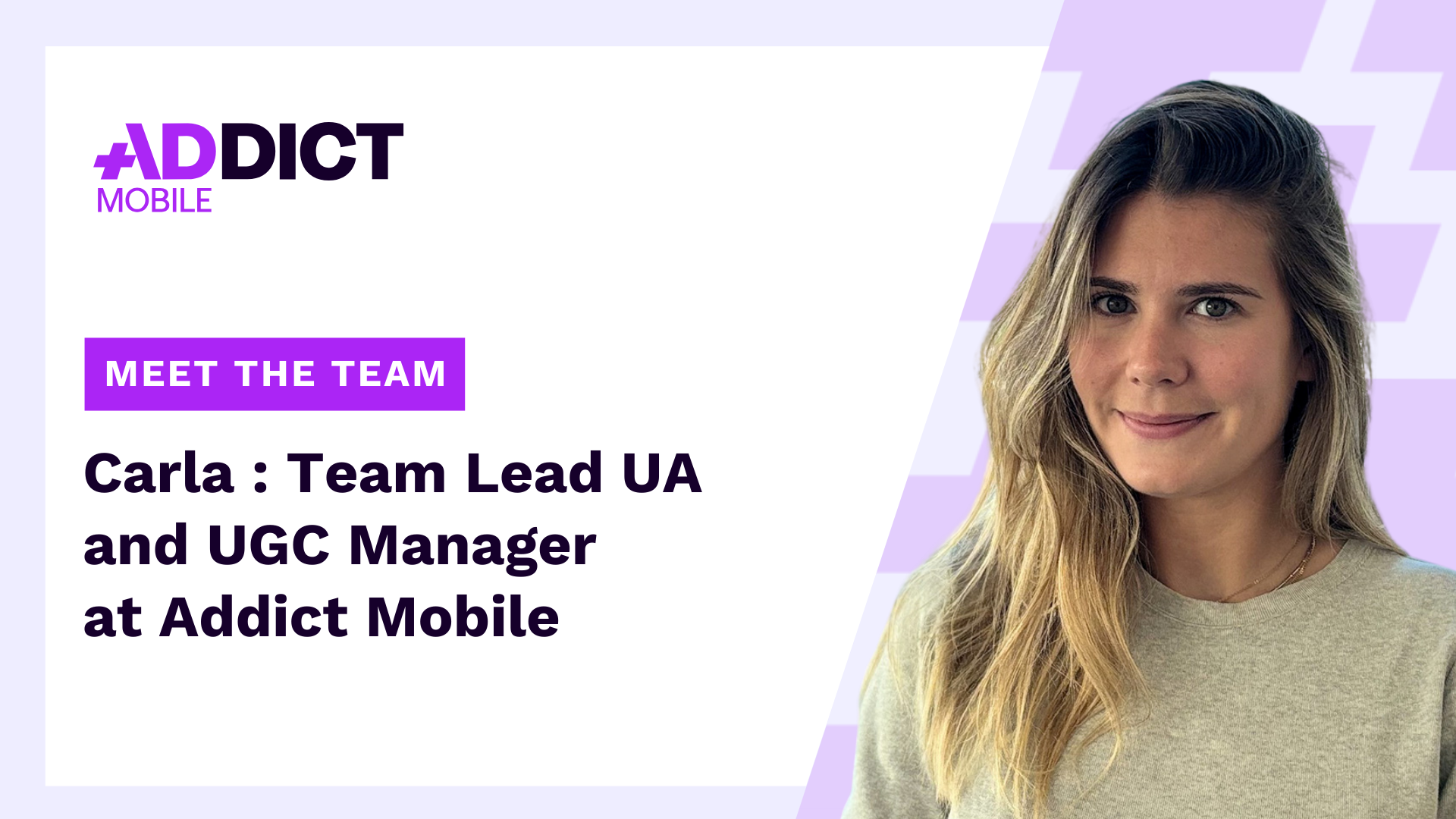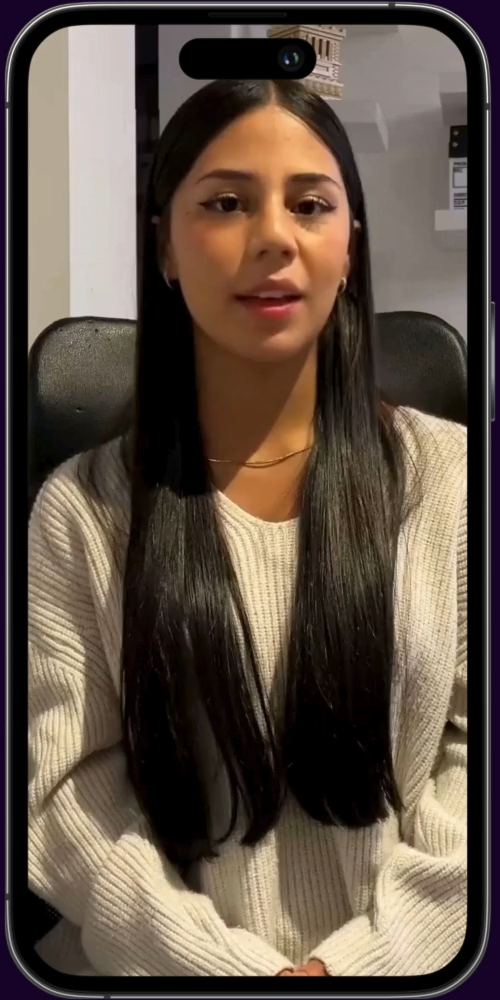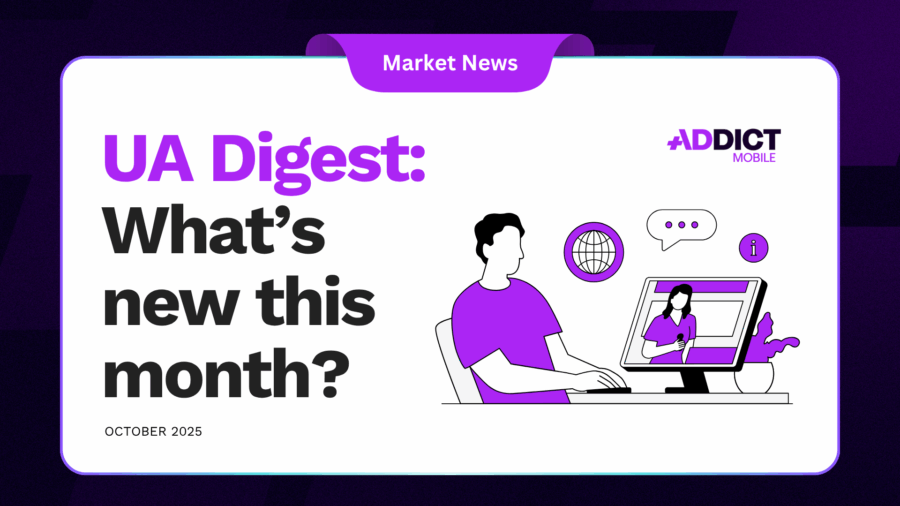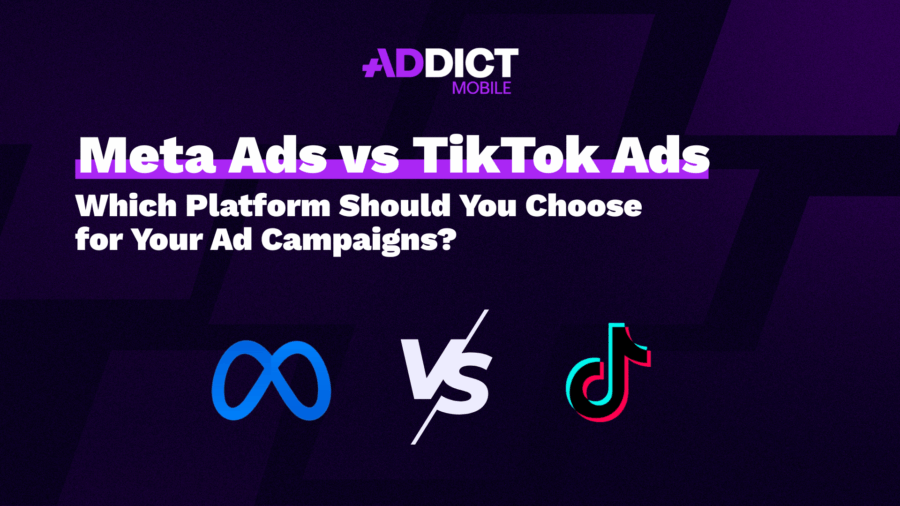Interview with Carla Vassalo, Team Lead UA and UGC Manager

Meet Carla, Team Lead UA and UGC Manager at Addict Mobile. Since joining in 2022 as a UA Manager, Carla has gradually taken on UGC management as well as team leadership responsibilities. Today, she juggles campaign management, the creation of engaging UGC videos, and leading her team.
In this interview, discover how Carla manages these different aspects of her role, always keeping performance at the center of her focus.
What are your main responsibilities at Addict Mobile?
As a Senior UA Manager, I handle over nine projects, which means optimizing campaigns, creating reports, managing client relationships, and analyzing results to provide strategic recommendations.
I’m also the UGC Lead, which involves overseeing UGC video production from A to Z, managing client relations, and running the TTCX program, a TikTok initiative that connects advertisers with creative experts. I also support the Sales team when needed to help bring in new projects.
Lastly, I lead a team of three, helping them grow and achieve their goals.
How do you balance the different parts of your role?
For me, organization is key. With all the different UA and UGC video projects, I need to make sure everything moves forward smoothly, which requires a lot of structure. The UGC side is particularly demanding, with more stakeholders and lots of small validation steps.
Good communication with my team is also crucial. I’ve learned to delegate tasks while keeping an eye on key points, which helps me free up time for top priorities.
I also do regular check-ins with my team to discuss workloads and tasks so we all stay on the same page.
Why have UGCs become so central in UA strategies? What are their benefits?
UGC videos are a new way of communicating that really took off with platforms like Snapchat and TikTok. Even the more traditional channels had to adapt. Instead of creating very classic ads, we now develop more organic visuals that blend seamlessly into feeds and resonate more with audiences.
The benefit of this kind of content is that it builds greater trust in the brand and drives more engagement, which is also boosted by the algorithms. People like seeing real people they can relate to and trust. UGC videos also make it easier to showcase products naturally, which works especially well for sectors like retail with content such as unboxings.

What challenges come up when implementing UGC?
The process of creating UGC videos can be quite long and tedious. There are multiple stakeholders to manage: responding to clients’ needs, answering creators’ questions, and guiding them in the right direction to get the best results. It’s a delicate balance: we want to give creators enough freedom so the video feels natural, without it becoming messy. That’s why we guide them with a brief, while making sure the outcome doesn’t end up overly scripted or robotic.
Another challenge is finding profiles that perfectly match the needs and are of good quality, all while keeping costs reasonable, especially since prices can vary a lot depending on the market.
Lastly, staying on top of new content trends is crucial because what works today can quickly become outdated.
How do you ensure the quality and consistency of UGC videos while giving creators the freedom they need?
We’ve put in place clear processes to ensure quality while respecting creators’ creativity.
- Client call: To fully understand expectations, criteria, and the type of profiles they’re looking for.
- Brief preparation: A roadmap for the creator with details about the brand, “do’s and don’ts,” inspirations, etc. Depending on the project and creator, the brief can be more or less scripted to ensure a consistent yet natural outcome, and it’s always approved by the client upfront to make sure everyone is aligned.
- Calls with creators when needed: To answer questions and clarify key points.
- Client validation: The client reviews the UGC videos and can provide feedback within reason, ensuring the content stays true to the UGC spirit without over-controlling.
Can you think of a campaign that challenged you or stood out to you?
The most challenging campaigns are often the ones where clients struggle to understand the difference between UGC videos and influencer or branding content. There’s a lot of explaining involved, as UGC videos are all about performance. While we respect the brand’s universe, we need to adapt to platform codes and audience expectations to make it work. The content needs to stay organic, blend into the feed, and avoid being overly polished or branded, otherwise, it loses its effectiveness.
Another challenge is managing expectations around creator profiles. The goal isn’t to find influencers with large followings, but rather people who are “just like you and me” to keep the content authentic. Sometimes, when expectations are too specific, it can be tough to find profiles that fit 100%. For example, we once proposed over 300 profiles to a client, but only a small portion was approved, and we ended up working with just about twenty.
Do you have a funny anecdote to share about working with content creators on a campaign?
One time, a creator assured me that he spoke Spanish like a native… but in reality, his level was more like B1. We quickly realized it wasn’t going to be as smooth as expected!
NEWS
Article in relation

Cheat Sheet #3: Everything You Need to Know…
Q5 is the post-holiday “bonus” period running from December 26 to mid-January, a unique opportunity for advertisers to keep momentum after the holiday...
Published on 5 November 2025
UA Digest #10 : What’s new this month?
Discover our User Acquisition Digest, your monthly update on the latest trends and news in mobile marketing and user acquisition! Meta Andromeda: the...
Published on 28 October 2025
Meta Ads vs TikTok Ads: Which Platform Should…
In 2025, social ads have become a must for capturing attention and driving performance. When it comes to two major players, Tiktok ads...
Published on 20 October 2025

